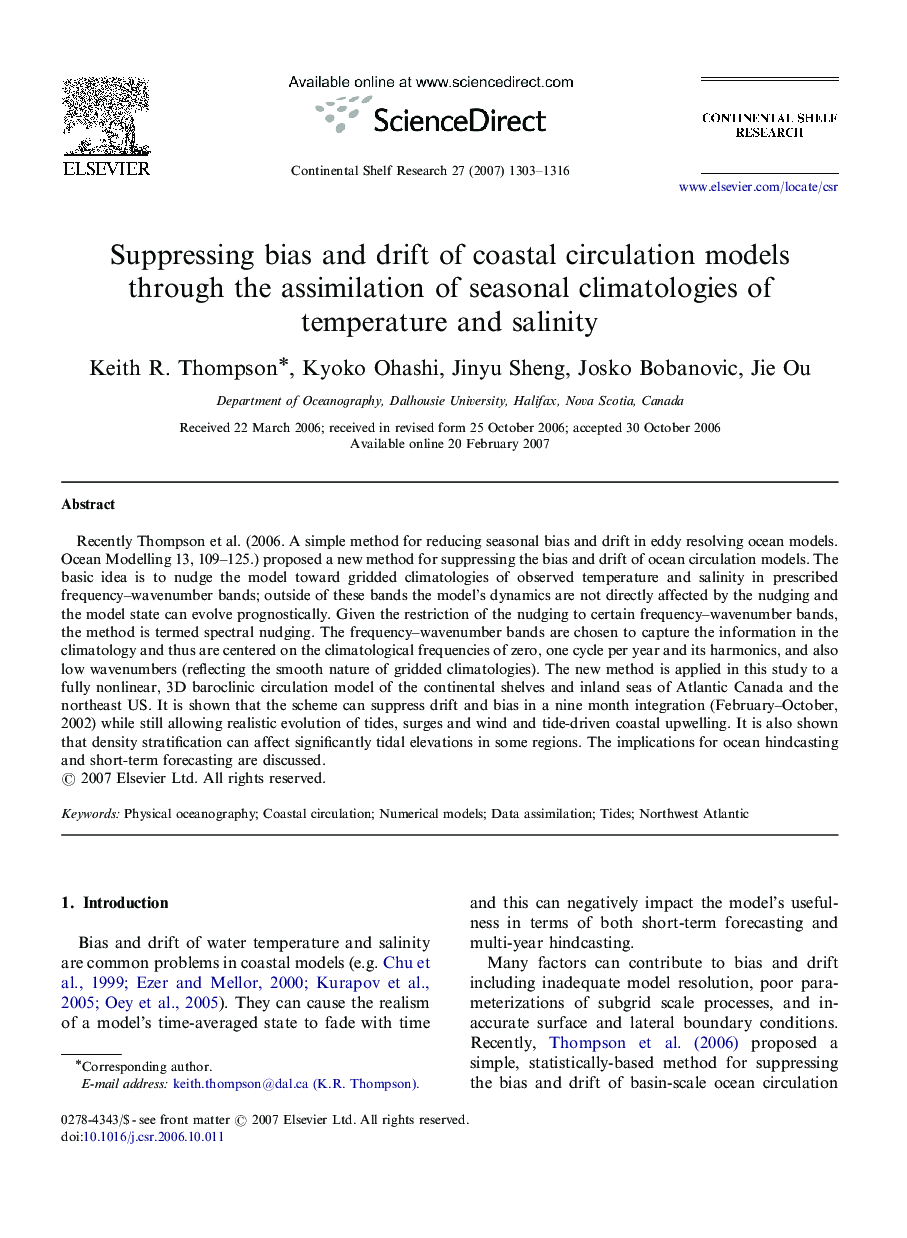| Article ID | Journal | Published Year | Pages | File Type |
|---|---|---|---|---|
| 4533831 | Continental Shelf Research | 2007 | 14 Pages |
Abstract
Recently Thompson et al. (2006. A simple method for reducing seasonal bias and drift in eddy resolving ocean models. Ocean Modelling 13, 109-125.) proposed a new method for suppressing the bias and drift of ocean circulation models. The basic idea is to nudge the model toward gridded climatologies of observed temperature and salinity in prescribed frequency-wavenumber bands; outside of these bands the model's dynamics are not directly affected by the nudging and the model state can evolve prognostically. Given the restriction of the nudging to certain frequency-wavenumber bands, the method is termed spectral nudging. The frequency-wavenumber bands are chosen to capture the information in the climatology and thus are centered on the climatological frequencies of zero, one cycle per year and its harmonics, and also low wavenumbers (reflecting the smooth nature of gridded climatologies). The new method is applied in this study to a fully nonlinear, 3D baroclinic circulation model of the continental shelves and inland seas of Atlantic Canada and the northeast US. It is shown that the scheme can suppress drift and bias in a nine month integration (February-October, 2002) while still allowing realistic evolution of tides, surges and wind and tide-driven coastal upwelling. It is also shown that density stratification can affect significantly tidal elevations in some regions. The implications for ocean hindcasting and short-term forecasting are discussed.
Keywords
Related Topics
Physical Sciences and Engineering
Earth and Planetary Sciences
Geology
Authors
Keith R. Thompson, Kyoko Ohashi, Jinyu Sheng, Josko Bobanovic, Jie Ou,
